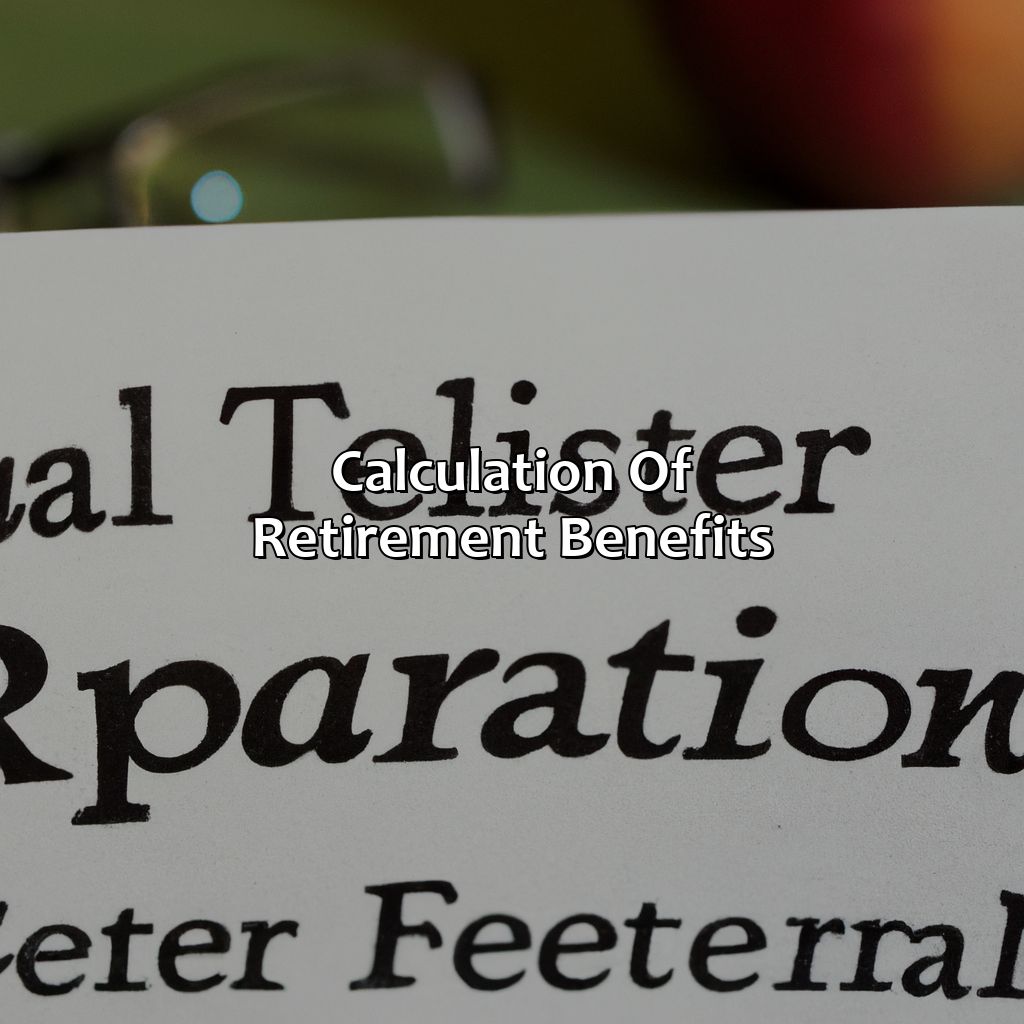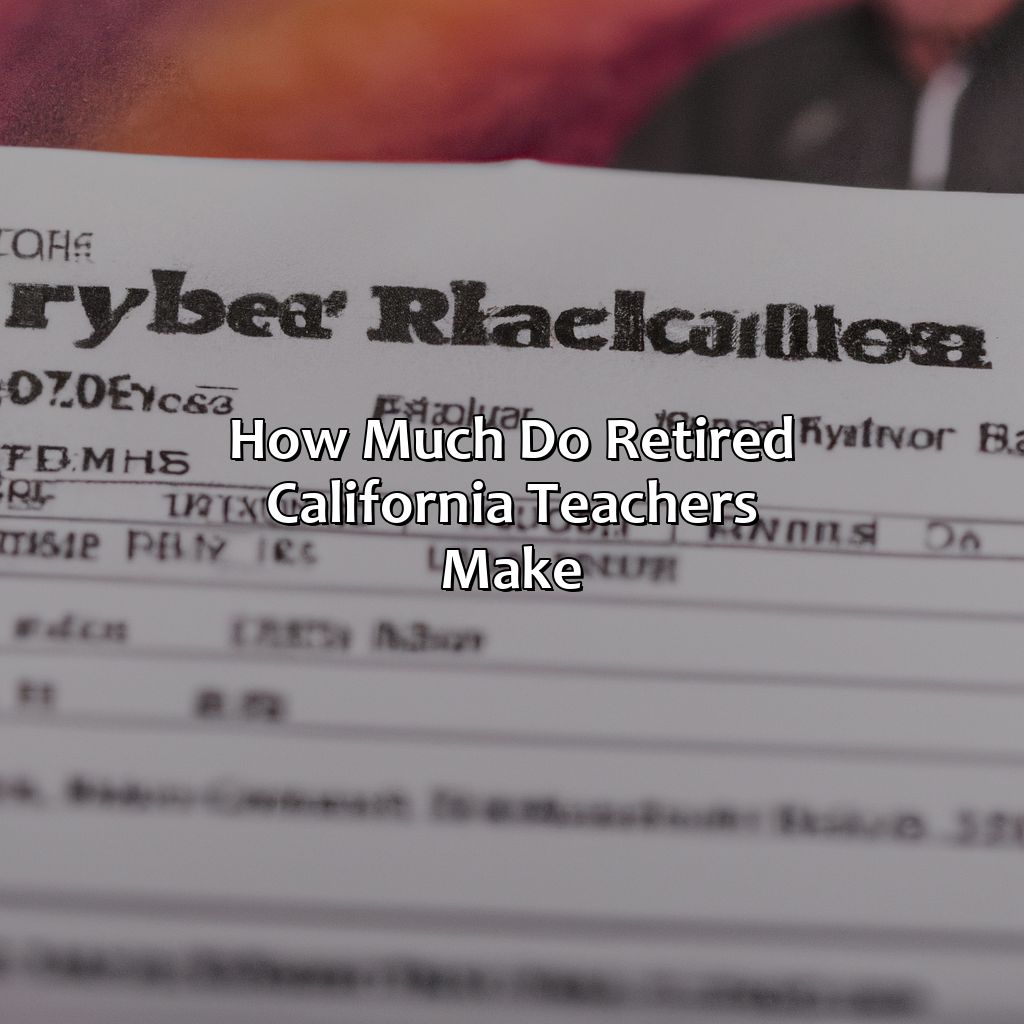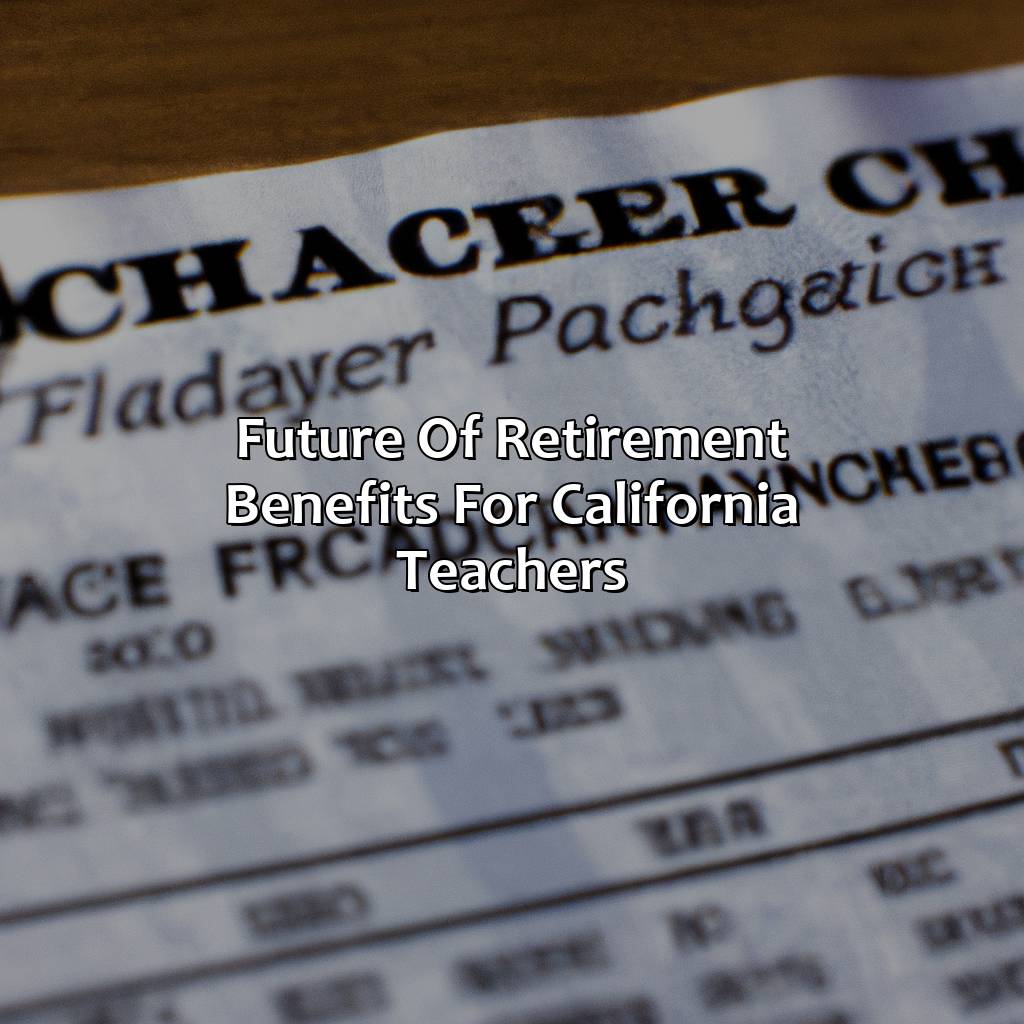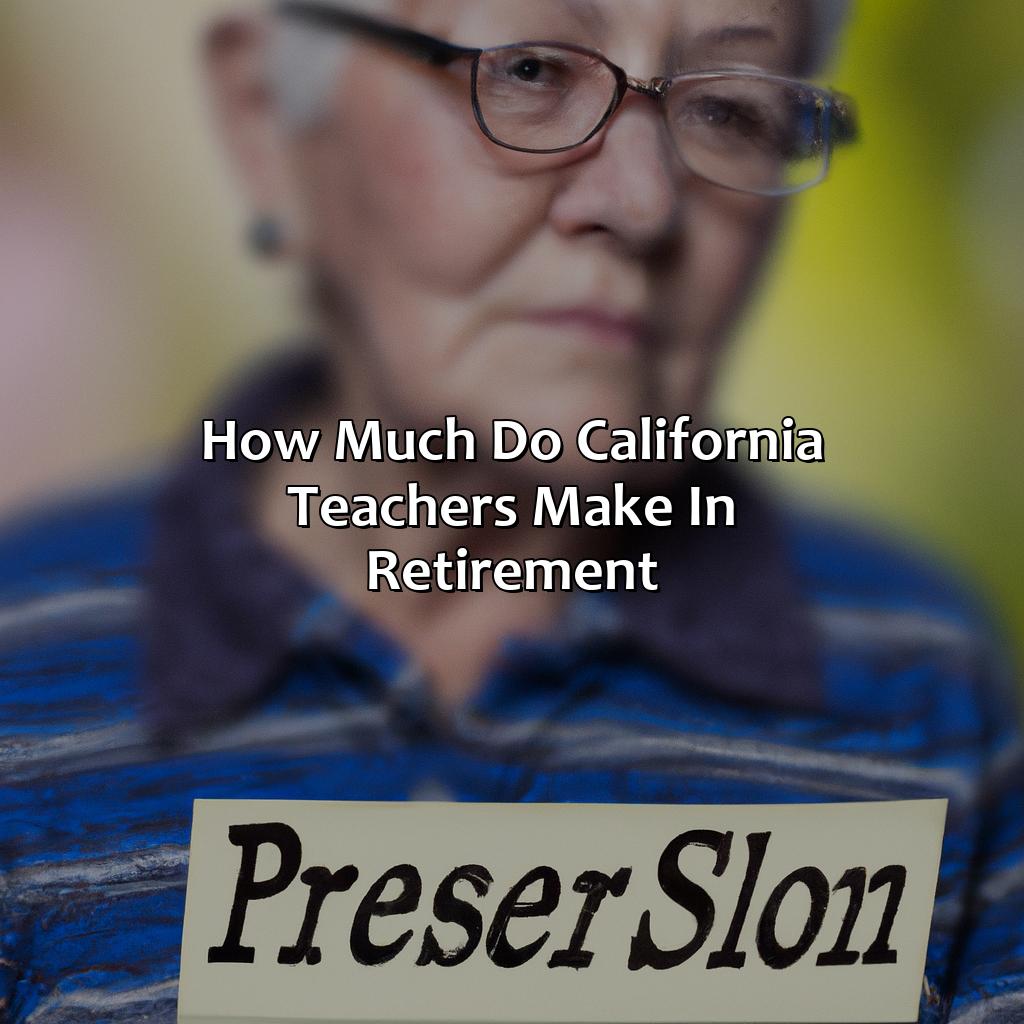How Much Do California Teachers Make In Retirement?
Key Takeaway:
- California teachers are entitled to retirement benefits upon completing at least five years of service. These benefits include pension, healthcare, and survivor benefits.
- To be eligible for retirement benefits, teachers must be at least age 50 or 55, depending on their retirement system, and have worked a minimum number of years in the profession. The retirement benefits are calculated based on years of service and final compensation.
- Retired California teachers on average make around $52,000 per year from their pensions. However, this amount can vary based on individual factors such as years of service, retirement system, and compensation at the time of retirement.
Are you curious to know how much retired teachers in California make? It’s important to understand the retirement benefits available in this state, as many teachers rely on this income in their later years. You’ll be surprised to learn what retired teachers in California can earn. Get ready to discover the facts.
California teachers’ retirement benefits
California Teachers’ Retirement Plan Details
Teachers in California have access to a robust retirement plan that provides them with a comfortable life even beyond their careers. The California State Teachers’ Retirement System (CalSTRS) is one of the most comprehensive pension plans in America, providing retirement, disability, and survivor benefits to eligible California educators.
As per CalSTRS, educators contribute a percentage of their salaries, which currently stands at 10.25%, to the system, while school districts chip in 18.13% of a teacher’s salary in the state. This contribution from the state ensures that educators in California can retire with dignity and financial security.
One unique feature of CalSTRS is that it is a defined benefit plan, guaranteeing predictable retirement income from the State of California, where payments continue throughout teachers’ lifetime, unlike many US retirement plans. According to recent data, CalSTRS pension benefit is 60%-75% of a teacher’s final compensation, depending on their years of service and age at retirement.
In the past, CalSTRS dealt with some challenges of underfunding, leading to concerns about sustainability. However, in 2014, Governor Jerry Brown signed legislation to increase state contributions to the fund, enabling CalSTRS to reach its 100% funding status by 2046.

Image credits: retiregenz.com by James Washington
Eligibility criteria for retirement benefits
To be eligible for retirement benefits, there are criteria that must be met. These include the number of years worked, age, and service credit earned. The individual must have worked for a specified number of years, generally 5-10 years, depending on the retirement plan. In addition, they must be at least 55 years old to receive full benefits. The amount of service credit earned will determine the amount of retirement benefits received.
The following are some of the eligibility criteria for retirement benefits:
- Years worked
- Age
- Service credit earned
- Retirement plan type
- Retirement benefit payout options
- Disability or survivor benefits eligibility
It is important to note that benefits can vary depending on the retirement plan type and other factors specific to the individual. It is imperative to consult with a financial advisor to fully understand the eligibility criteria and retirement benefit options.
In addition to eligibility criteria, retirement benefits may also include disability or survivor benefits. Disability benefits are available for individuals who become disabled before reaching retirement age, while survivor benefits are available for spouses and dependent children of deceased retirees.
A retired California teacher, John, started his career in education as a substitute teacher at the age of 26. He eventually became a full-time teacher and worked for 30 years before retiring at the age of 56. Due to his years of service and retirement plan type, John receives a monthly retirement benefit that allows him to live comfortably in retirement.

Image credits: retiregenz.com by Adam Washington
Calculation of retirement benefits
Retirement Benefits Calculation – Learn how your retirement benefits are calculated and estimated based on your years of service and final compensation.
Calculation of retirement benefits is based on a combination of factors. In the table below, you can see the estimated amount based on the years of service and final compensation for a teacher who retired at age 60 in the year 2021. The state offers different retirement plans that can affect the amount of pension you may receive.
| Years of Service | Final Compensation | Estimated Monthly Pension |
|---|---|---|
| 10 | $50,000 | $1,000 |
| 20 | $80,000 | $2,400 |
| 30 | $100,000 | $3,750 |
It is important to note that retirement benefits may vary depending on your individual situation, such as your specific retirement plan, years of service, and final compensation. Additionally, social security benefits may also affect your monthly pension.
To maximize retirement benefits, consider contributing to a 403(b) or 457 plan, if available. These tax-deferred accounts allow you to save a portion of your income towards retirement and can increase your retirement income. Additionally, consider working longer to increase your years of service and final compensation, which can also increase your monthly pension.

Image credits: retiregenz.com by Harry Washington
How much do retired California teachers make?
California teachers’ retirement income: An Overview
California teachers earn a stable and comfortable retirement income. The ‘how much do retired California teachers make?’ question is answered as follows. California retired teachers’ income varies depending on their years of service, age, and highest salary. The California State Teachers’ Retirement System (CalSTRS) uses a formula to determine guaranteed retirement income.
Continuing with the topic, it is essential to know that this formula considers an educator’s highest-paid 12 months, their age at retirement, and their years of service. Retirees’ income can increase with cost-of-living adjustments and some one-time payments.
It is important to note that teachers who have served for more than 30 years earn higher retirement payouts compared to those with fewer years of service.
A historic fact of note is that the Golden State’s teachers’ retirement income is among the highest in the United States. California values its educators and is committed to supporting them, even in retirement. Therefore, California retired teachers can enjoy their golden years with a reliable income to sustain their comfortable lifestyle.

Image credits: retiregenz.com by Joel Duncun
Factors affecting retirement benefits
Retirement benefits for California teachers are influenced by an array of factors. These factors can determine the amount an educator receives after leaving the profession. One of the key factors is the length of service, as educators who have served longer earn larger benefits. Additionally, the age at which a teacher retires also has an impact on their retirement earnings. Furthermore, the highest salary earned during a teacher’s career is used to determine their retirement compensation.
Other factors that can affect a teacher’s retirement benefits include their position held within the education system, their years of experience, and any additional benefits they may have accrued during their career. Teachers who have contributed to a retirement savings plan may also receive additional compensation upon retirement.
It is important to note that a teacher’s retirement plan may undergo changes due to legislative actions or market conditions. As such, educators should keep themselves informed about any changes that may impact their retirement benefits.
To maximize retirement benefits, teachers can consider contributing to a retirement savings plan or seeking advice from a financial advisor. Additionally, they may want to consider working to increase their years of service to earn larger benefits. These steps can help ensure that educators receive the retirement compensation they deserve after a dedicated career in the education system.

Image credits: retiregenz.com by Harry Arnold
Challenges faced by retired California teachers
Retirement can pose several challenges for former California educators. One significant drawback is the difficulty in managing living expenses with limited retirement income. As cost of living continues to rise, their fixed income doesn’t increase. Other factors include the need to adjust to a new lifestyle and the emotional strain of leaving the classroom after many years. Without proper planning, managing the expenses can be daunting. Financial planning and personalized advice can provide much-needed help to overcome these challenges.
Former teachers are also subject to unexpected health problems, rendering them unable to work. While the California State Teachers’ Retirement System (CalSTRS) provides medical coverage, healthcare expenses may still cause financial strain. Moreover, the retirement benefit formula has disadvantages for individuals who don’t get Social Security benefits and didn’t make Social Security contributions.
A retired teacher in San Diego recounted their experience. After retirement, the couple’s income was reduced drastically, affecting their lifestyle. While they had been planning for retirement for years, increased cost of living meant they had to rethink their budget. Nonetheless, they soon started earning income through private tutoring, allowing them to retain their way of life.

Image credits: retiregenz.com by James Duncun
Future of retirement benefits for California teachers
In response to the evolving retirement system for California educators, it is important to consider the future of retirement benefits. The current state contribution rate cannot sustain the system, thus, leading to a projected short-fall. This will have a significant impact on retirement benefits for California teachers, including pension and health benefits. To address this issue, the state legislature has implemented measures such as increasing the contributions rate by both employees and the state. These measures are aimed towards securing the long-term viability of California’s retirement benefits for teachers.
Additionally, teachers who have served for a long time and have accumulated enough years of service, may be eligible for retirement benefits that could range from $1,200 to $4,000 per month. The California State Teachers’ Retirement System (CalSTRS) offers a variety of retirement plans and options for teachers to choose from, including the pension and Defined Benefit Supplement. Therefore, adequate retirement planning is vital for educators in California facing the prospects of retirement.
Pro Tip: Teachers in California are encouraged to start their retirement planning early, in order to achieve a comfortable retirement. Consult with financial advisors and learn more about different retirement options offered by CalSTRS for an informed decision on the best plan for you.

Image credits: retiregenz.com by Adam Arnold
Five Facts About How Much California Teachers Make in Retirement:
- ✅ The average California teacher’s pension benefit is $49,000 per year. (Source: CalSTRS)
- ✅ California teachers can retire at age 55 with at least five years of service credit. (Source: Go Banking Rates)
- ✅ The retirement formula for California teachers is 2% at age 60 or 2.4% at age 63 or older. (Source: EdSource)
- ✅ California teachers contribute 8% of their salary towards their pension. (Source: CalSTRS)
- ✅ Over 1 million California educators and their families benefit from CalSTRS retirement plans. (Source: CalSTRS)
FAQs about How Much Do California Teachers Make In Retirement?
How much do California teachers make in retirement?
California teachers’ retirement benefits are based on years of service and final compensation. As of 2021, a teacher with 30 years of service and a final compensation of $100,000 will receive a monthly benefit of $4,850.
Do California teachers get Social Security and a pension?
Most California teachers do not receive Social Security benefits. Instead, they contribute to their retirement through the California State Teachers’ Retirement System (CalSTRS), which provides a pension and other benefits.
Can California teachers retire early?
Yes, California teachers can retire early if they meet certain age and service requirements. A teacher can retire as early as age 55 with at least five years of service credit, or at any age with 30 years of service credit. However, early retirement may result in a reduced monthly benefit.
How is a California teacher’s retirement benefit calculated?
A California teacher’s retirement benefit is calculated based on their years of service and final compensation. The formula used is 2% multiplied by the number of years of service, multiplied by the final compensation.
Are California teacher retirement benefits guaranteed?
California teacher retirement benefits are guaranteed by the California State Teachers’ Retirement System. This means that even if the pension fund experiences financial difficulties, retirees will still receive their benefits.
Can California teachers receive a lump sum payout instead of a monthly pension?
California teachers have the option to receive a lump sum payout instead of a monthly pension. However, this option may not be available to all teachers and may result in a lower overall benefit. It is important to consult with a financial advisor before making a decision.




